Topics
Category
Era
Rolvaag, Karl Fritjof (1913–1990)
In his youth a hobo, a radical, a soldier, and a scholar, Karl Rolvaag became an adroit politician—a key builder of the Democratic Farmer–Labor (DFL) Party. He served eight years as lieutenant governor and four years, 1963–1967, as Minnesota’s thirty-first governor.
Though a moderate in office, Karl Rolvaag received a radical political education that not even Floyd B. Olson could match. His father, novelist and scholar Ole Rølvaag, held leftist views, and his mother came from a family of South Dakota populists. After his father’s death, in 1931, Rolvaag roamed the West, working in mines, harvest crews, and lumber camps. He considered joining the Communist Party, and did join the radical union Industrial Workers of the World (the Wobblies).
After six years Rolvaag returned to his hometown, Northfield, and to St. Olaf College, where he studied history, played football, and was elected senior class president. As World War II loomed, he co-founded a campus pacifist group, Patriots for Peace. Upon graduating, in 1941, he was drafted into the Army, where he became a tank commander and saw extensive service in Europe after D-Day, earning a Silver Star, a Purple Heart (from friendly fire, he said), and two Croix de Guerre. He then studied history and political science at the University of Minnesota. He did graduate work in Norway, where he associated with the radical Norwegian Labor Party.
A DFLer, Rolvaag ran for Congress, and lost, in 1946, 1948, and 1952, and worked for the DFL as party chair, 1950–1954, traveling extensively to build the party statewide. He was a great friend and ally of DFL governor Orville Freeman. He was elected Lieutenant Governor (alongside Freeman, as governor) in 1954, 1956, 1958, and 1960 (when Freeman was defeated.) In 1962 he became the first Minnesota governor elected to a four-year term when he beat incumbent governor Elmer L. Andersen in the closest statewide election in Minnesota history, decided by ninety-one votes.
In office, despite an unfriendly legislature, Rolvaag achieved expansion of state community colleges and vocational schools, improved conservation, the restoration of Fort Snelling, and better resources for developmentally disabled people. Rolvaag also appointed Walter Mondale to the US Senate as a replacement for Hubert Humphrey.
While he had some legislative successes, DFL party leaders doubted Rolvaag’s popularity, and there were rumors he had a drinking problem. In the party’s 1966 convention, Lieutenant Governor Sandy Keith defeated him for party endorsement. Rolvaag then crushed Keith in the primary, leaving the DFL divided. Rolvaag narrowly lost re-election to Republican Harold LeVander.
President Lyndon Johnson appointed Rolvaag ambassador to Iceland, where he served two years. He returned to electoral politics in 1972, elected to Minnesota’s Public Service Commission after defeating the incumbent chair. He served five years, but the alcoholism that had bedeviled him most of his adult life took an increasing toll. In 1977 he resigned to concentrate on his health; by then he had been through treatment four times. In November of 1978 he told reporter Steve Berg that he had been sober for eleven months, the longest such stint he could remember. Rolvaag died on December 20, 1990, at age seventy-seven.
Bibliography
Berg, Steve. “Karl Rolvaag Drops Political Battles to Fight for Life.” Minneapolis Tribune, November 10, 1978.
Hagen, Robert J., and Steve Brandt. “Rolvaag Says He Will Resign from PSC, Cites Alcoholism.” Minneapolis Tribune, November 26, 1977.
Rolvaag, Karl. Interview with Carl Ross, August 31, 1989. Twentieth-Century Radicalism in Minnesota Oral History Project. Oral History Collection (OH 30.59), Minnesota Historical Society, St. Paul.
⸻ . Interview with Mark Haidet, December 11, 1978. Oral History Collection (OH 69), Minnesota Historical Society, St. Paul.
Whereatt, Robert. “Karl Rolvaag, Minnesota’s 31st Governor, Dies at 77.” Minneapolis Star Tribune, December 21, 1990.
Related Resources
Primary
Karl F. Rolvaag papers, 1921–1991 (bulk 1946–1969)
Description: Correspondence, political files, subject files, personal files, news clippings, print materials, and sound and visual materials.
Manuscripts Collection, Minnesota Historical Society, St. Paul
http://www2.mnhs.org/library/findaids/00996.xml
Secondary
Gieske, Millard L. Minnesota Farmer-Laborism: The Third-Party Alternative. Minneapolis: University of Minnesota Press, 1979.
Valelly, Richard, M. Radicalism in the States: the Minnesota Farmer-Labor Party and the American Political Economy. Chicago: University of Chicago Press, 1989.
Related Images
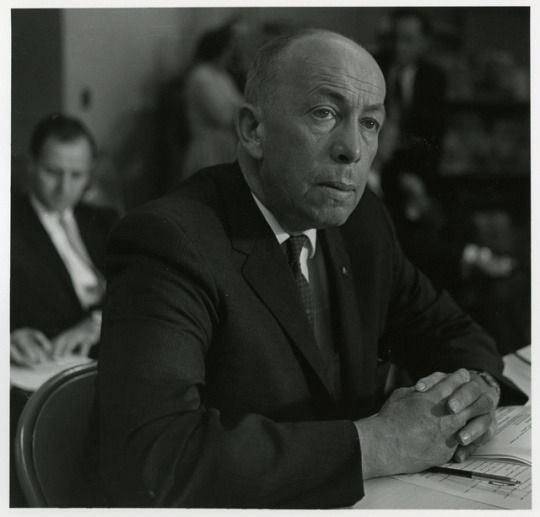
Karl Rolvaag
Holding Location
Articles
More Information
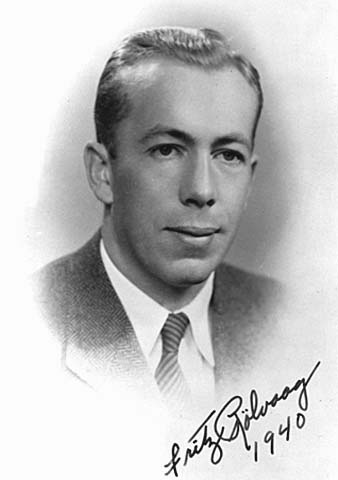
Karl Rolvaag, 1940
Holding Location
Articles
More Information
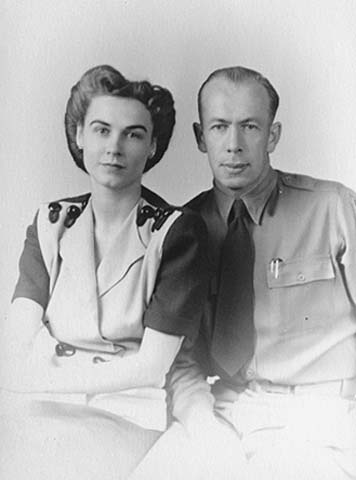
Karl and Florence Rolvaag
Holding Location
Articles
More Information

Karl Rolvaag with Senator Henry M. Harren
Holding Location
Articles
More Information
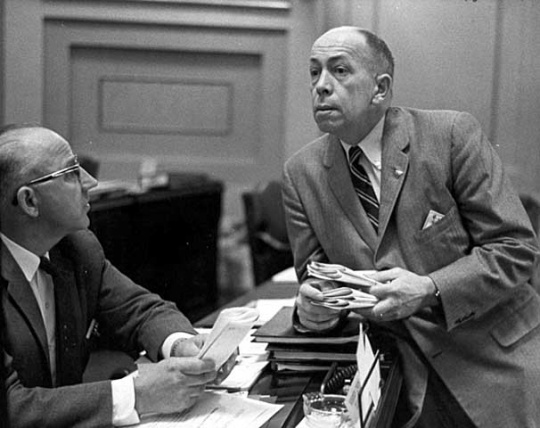
Karl Rolvaag, ca. 1959
Holding Location
Articles
More Information
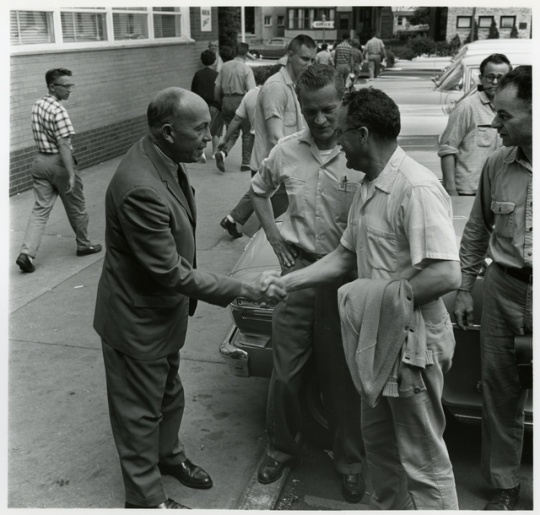
Karl Rolvaag campaigning
Holding Location
More Information
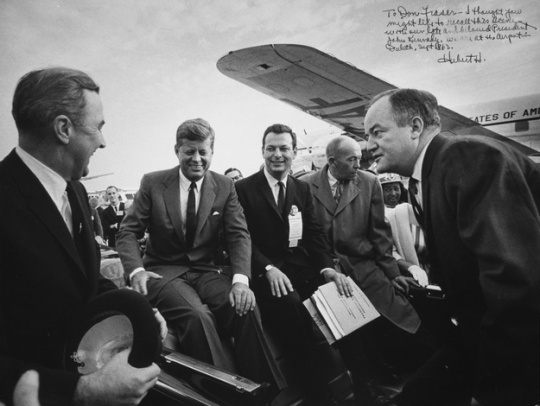
President John F. Kennedy, Eugene McCarthy, Donald Fraser, Karl Rolvaag, and Hubert H. Humphrey
Holding Location
More Information
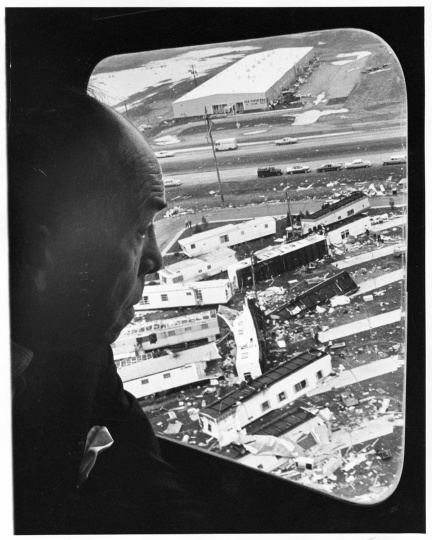
Minnesota Governor Karl Rolvaag flying over Fridley tornado wreckage
Minnesota Governor Karl Rolvaag surveying the damage to the Fridley Terrace trailer park by helicopter, May 8, 1965. Minneapolis Tribune photograph by Duane Braley. Minneapolis Star Tribune photographs collection arranged by subject (box 166), Minnesota Historical Society.
All rights reserved
Holding Location
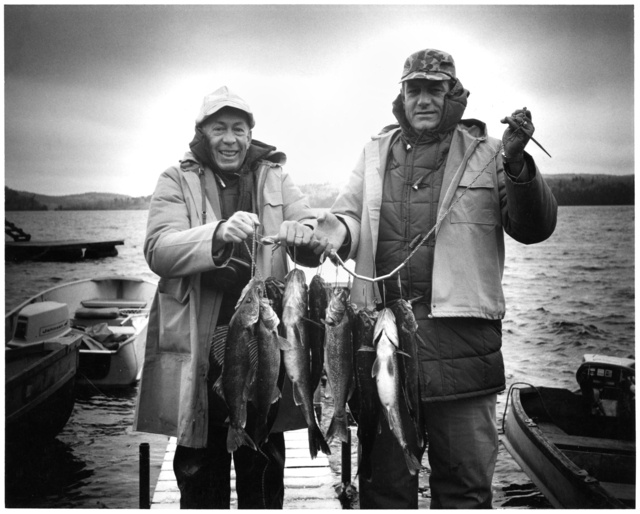
Karl Rolvaag with Harold E. Hughes
Holding Location
Articles
More Information
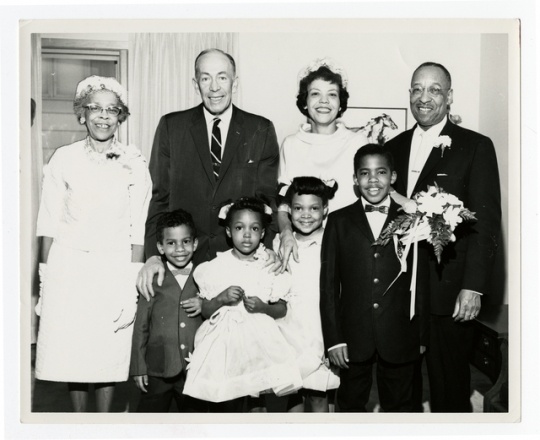
Cecil Newman and his family with Minnesota Governor Karl Rolvaag
Holding Location
More Information
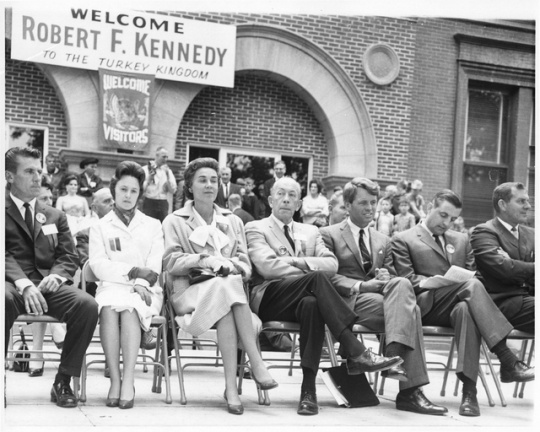
Karl Rolvaag with Robert F. Kennedy
Holding Location
Articles
More Information
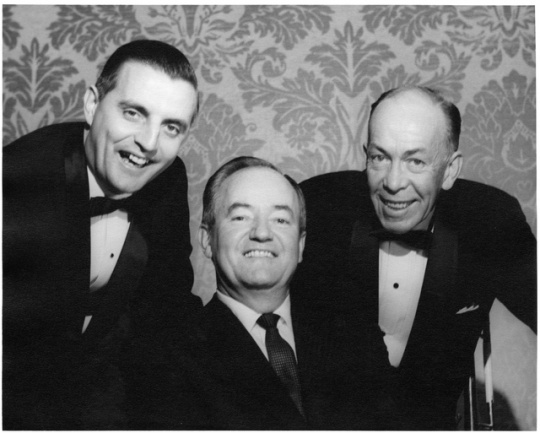
Walter Mondale and Karl Rolvaag with Hubert Humphrey
Public domain
Holding Location
More Information
Related Articles
Turning Point
After struggling with alcoholism for most of his adult life, Rolvaag resigns from the Public Service Commission in 1977 to focus on treating his disease. Unusual for the time, he speaks candidly about the issue in order to dispel public stigma.
Chronology
1913
1931
1937
1941
1943–1944
1946
1947
1954
1962
1964
1966
1967–1969
1972
1977
1990
Bibliography
Berg, Steve. “Karl Rolvaag Drops Political Battles to Fight for Life.” Minneapolis Tribune, November 10, 1978.
Hagen, Robert J., and Steve Brandt. “Rolvaag Says He Will Resign from PSC, Cites Alcoholism.” Minneapolis Tribune, November 26, 1977.
Rolvaag, Karl. Interview with Carl Ross, August 31, 1989. Twentieth-Century Radicalism in Minnesota Oral History Project. Oral History Collection (OH 30.59), Minnesota Historical Society, St. Paul.
⸻ . Interview with Mark Haidet, December 11, 1978. Oral History Collection (OH 69), Minnesota Historical Society, St. Paul.
Whereatt, Robert. “Karl Rolvaag, Minnesota’s 31st Governor, Dies at 77.” Minneapolis Star Tribune, December 21, 1990.
Related Resources
Primary
Karl F. Rolvaag papers, 1921–1991 (bulk 1946–1969)
Description: Correspondence, political files, subject files, personal files, news clippings, print materials, and sound and visual materials.
Manuscripts Collection, Minnesota Historical Society, St. Paul
http://www2.mnhs.org/library/findaids/00996.xml
Secondary
Gieske, Millard L. Minnesota Farmer-Laborism: The Third-Party Alternative. Minneapolis: University of Minnesota Press, 1979.
Valelly, Richard, M. Radicalism in the States: the Minnesota Farmer-Labor Party and the American Political Economy. Chicago: University of Chicago Press, 1989.













